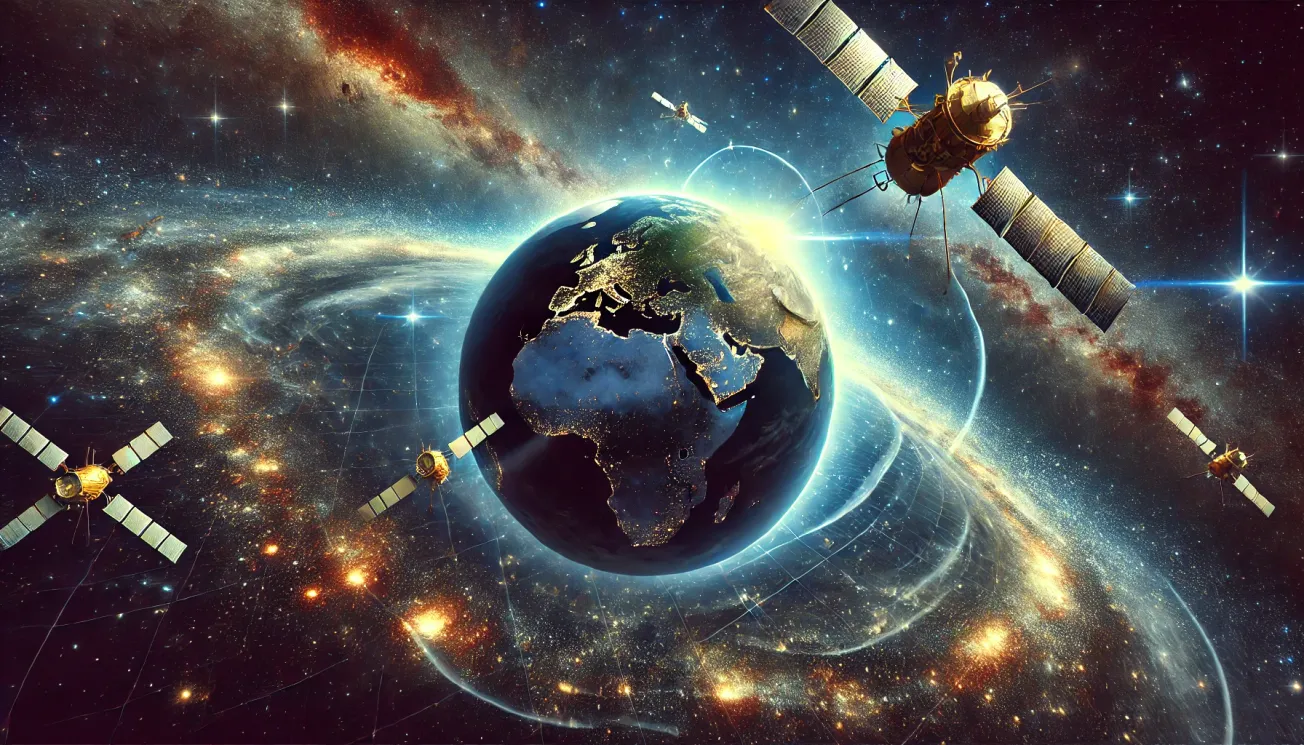Ever wondered how your phone always knows exactly where you are—even in the middle of nowhere? Or how planes and ships navigate oceans without missing a beat? It’s all thanks to satellites.
But who owns these invisible navigators, and who pays to keep them running?
Most people assume GPS is a private service, but the truth is far more surprising—and global competition for satellite navigation is heating up. In this article, we’ll explore:
✅ Who owns and funds GPS satellites
✅ How much they cost and how long they last
✅ The future of GPS (and its competition)
What Exactly Are GPS Satellites and How Do They Work?
🚀 GPS (Global Positioning System) satellites orbit 20,200 kilometers (12,550 miles) above Earth, transmitting precise location and time signals.
🔹 Your phone, car, or GPS device triangulates signals from multiple satellites to determine its exact location.
🔹 At least four satellites must be within range to provide an accurate fix.
🔹 These satellites use atomic clocks, ensuring near-instantaneous precision.
🎯 How accurate is GPS? With modern technology, positioning can be accurate within a few feet. Some advanced GPS systems (like those used in autonomous vehicles) can even pinpoint locations within centimeters!
The History of GPS Satellites: From Military Secret to Everyday Necessity
💡 Did you know GPS was originally built for military use?
🔹 1973 – The U.S. Department of Defense (DoD) began developing GPS for military navigation.
🔹 1983 – President Ronald Reagan opened GPS to the public after a tragic civilian aircraft was shot down due to navigational errors.
🔹 1995 – The first full GPS satellite constellation became operational.
🔹 2000 – The U.S. government removed "Selective Availability," making civilian GPS more precise.
📡 Today, GPS is essential for everything—from Google Maps to airline navigation to self-driving cars.
🚀 But here’s the real question… who owns it?
Who Owns the GPS Satellites?
You might think a private company owns GPS, but the truth is more surprising…
🛰️ The U.S. Government – The Department of Defense (DoD) owns and operates all 31 GPS satellites.
💰 Funded by taxpayers – Despite being free to use, billions of dollars go into maintaining and upgrading the system.
However, GPS isn't the only global satellite navigation system. Other countries have developed rival systems:
🌍 Competing Global Navigation Satellite Systems (GNSS):
- 🇷🇺 GLONASS (Russia) – Military and civilian use, like GPS.
- 🇨🇳 BeiDou (China) – Now offers global coverage to compete with GPS.
- 🇪🇺 Galileo (Europe) – Higher accuracy for commercial and civilian applications.
Why does this matter? GPS has global dominance, but rival systems are growing—leading to a future where navigation technology is no longer U.S.-controlled.
How Many GPS Satellites Are There?
📡 Currently, 31 active GPS satellites orbit the Earth—positioned in six orbital planes to ensure global coverage at all times.
🚀 Key GPS satellite facts:
🔹 Minimum satellites needed for global coverage: 24
🔹 Current operational satellites: 31
🔹 Average weight per satellite: 2,000 kg (4,400 lbs)
🔹 Altitude: 20,200 km (12,550 miles)
🔹 Expected lifespan: 12 years
💡 What happens when a GPS satellite dies? It is decommissioned and replaced by a new satellite before it fails to ensure seamless coverage.
How Much Do GPS Satellites Cost?
💰 Each GPS satellite costs between $100 million and $300 million—including:
✅ Construction – High-tech materials, radiation shielding, atomic clocks.
✅ Launch costs – Transported into orbit via rockets like SpaceX’s Falcon 9.
✅ Maintenance – Ongoing tracking, software updates, and replacements.
Total annual GPS maintenance costs billions—but here’s the kicker: it’s free for you to use.
How Are GPS Satellites Funded?
The U.S. taxpayer foots the bill—but private companies also play a role in maintaining and expanding satellite-based navigation.
🔹 Public Funding (U.S. Government)
💰 Billions are allocated annually to maintain and replace satellites.
🛰️ Managed by the U.S. Air Force & Space Force, ensuring constant upgrades.
🌎 Used worldwide, even though the U.S. owns and funds it.
🔹 Private Sector Contributions
🚀 SpaceX & OneWeb – Launching new satellite networks that enhance GPS.
📡 Apple & Google – Use GPS data for mapping, indirectly contributing via their navigation software.
🛰️ Autonomous Vehicles – Companies like Tesla & Waymo rely on highly accurate GPS for self-driving tech.
🔮 What’s next? Private companies may soon launch alternative satellite navigation systems, challenging GPS’s monopoly.
The Future of GPS: What’s Next?
The next GPS revolution is already happening. New satellites (like the GPS III series) will bring:
✅ Higher accuracy (centimeter-level precision!)
✅ Better resilience against hacking & jamming
✅ Stronger signal penetration in urban areas
✅ More reliable service during extreme weather
💡 Will GPS remain the global leader?
China’s BeiDou and Europe’s Galileo are growing, making satellite navigation more competitive than ever. Soon, GPS may no longer be the only choice.
Conclusion: GPS Is a Lifeline—But It’s Changing Fast
Think about this: Every time you check a map, track a package, or even call an Uber, you’re relying on multi-billion-dollar satellites floating above Earth.
And while the U.S. still dominates satellite navigation, competition is growing fast. The future of GPS is no longer just about the U.S.—it’s about a global battle for who controls navigation in space.
🚀 What do you think? Could you live without GPS?
Drop a comment below! And if you want to stay updated on satellite tech and navigation trends, be sure to subscribe for more insights!






